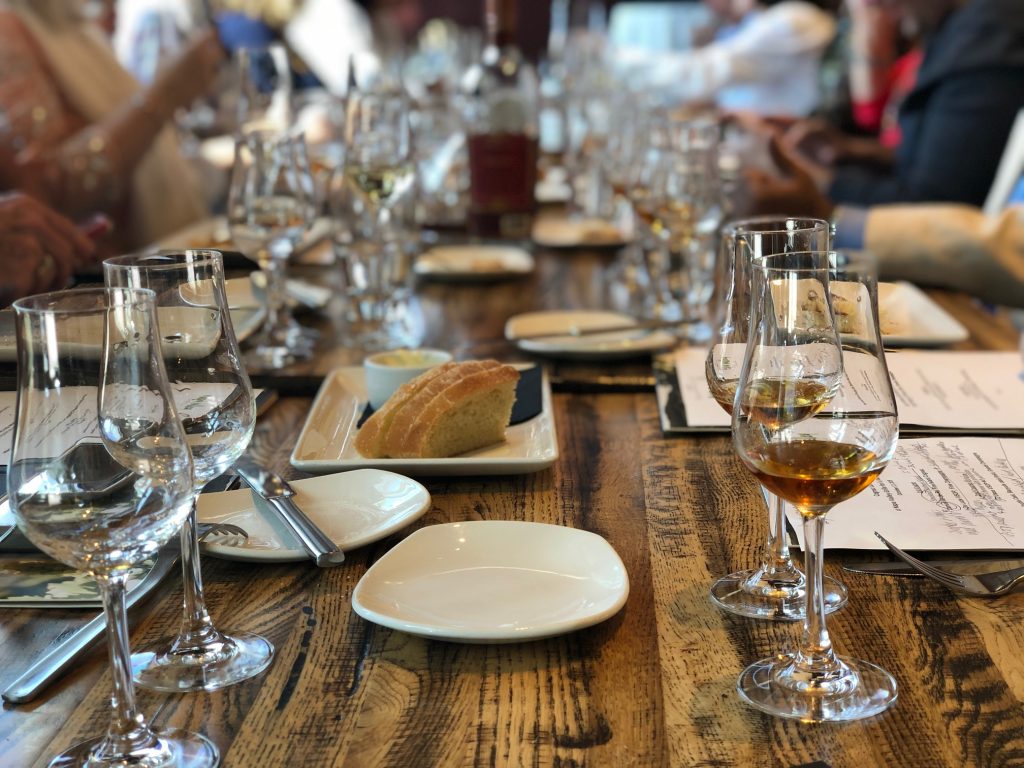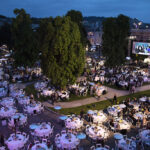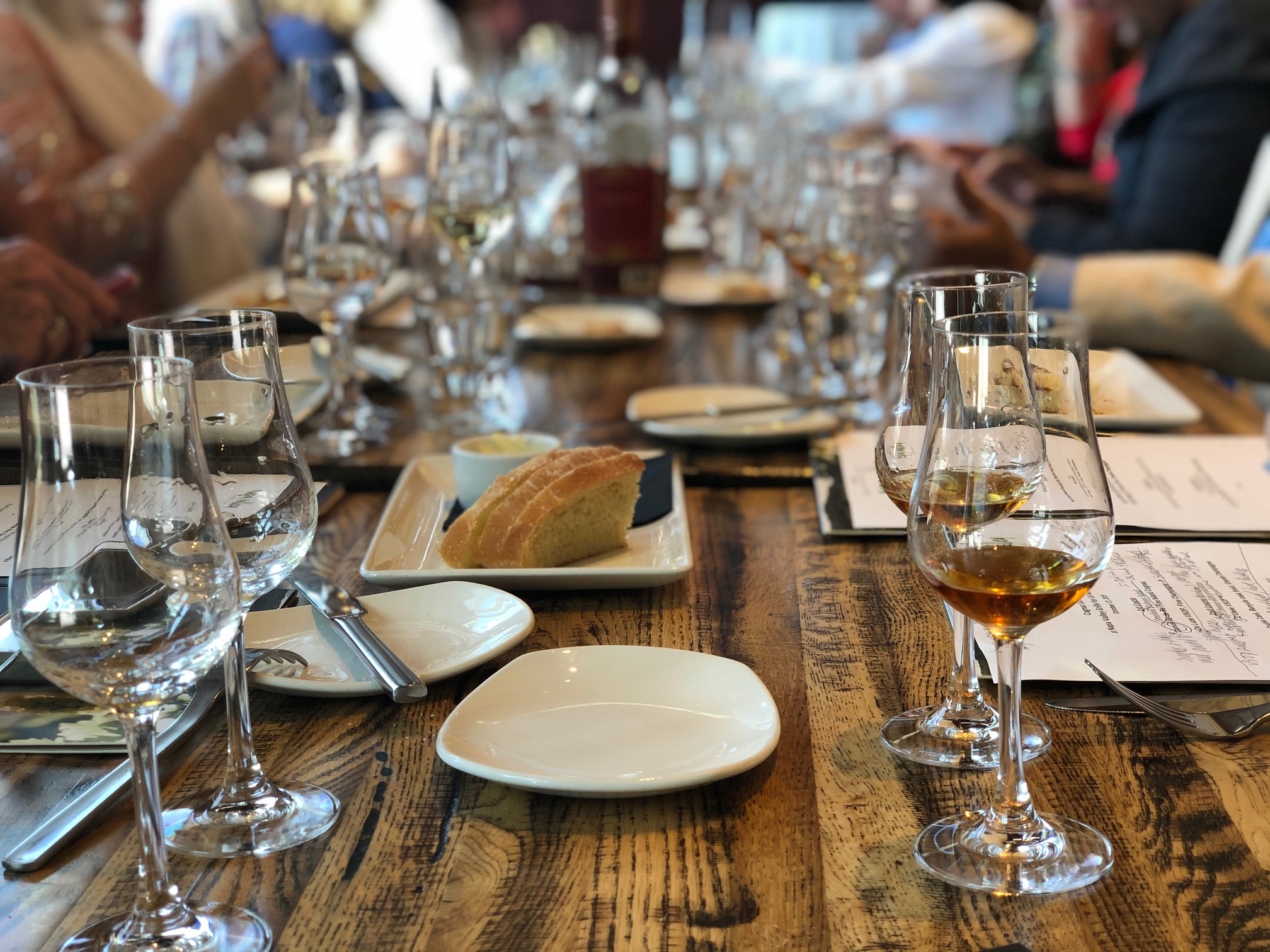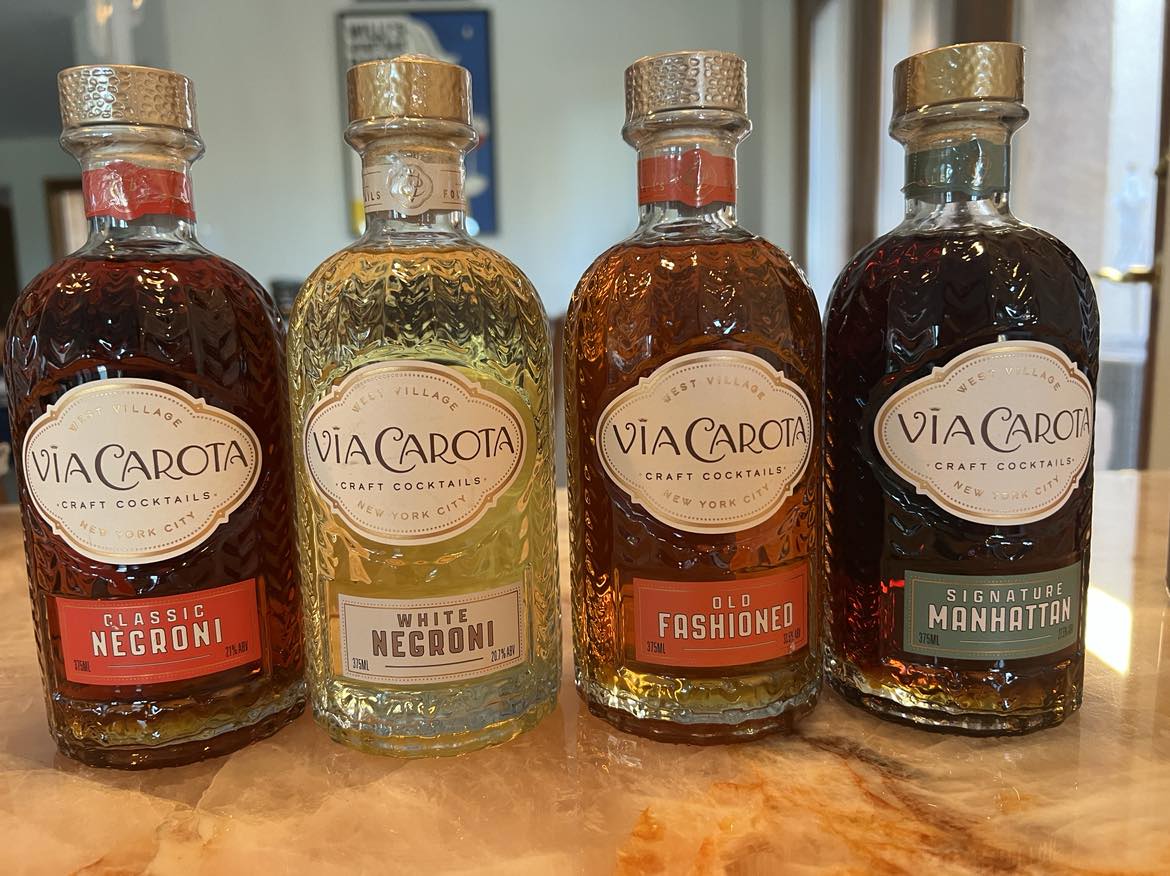Tickled to have had an opportunity to learn about Cognac from one of my peers in our #LAWineWriters group, Irina Ponomarenko, at our favorite spot in LA for pairings, Napa Valley Grille in Westwood. This was the invite:

Join us for a luncheon at Napa Valley Grille with Cognac Educator Irina Ponomarenko. Cognac, the most revered brandy in the world, is an expression of the distinct climate, soils, history and culture of the region where it is grown. We will taste several spirits that illustrate the diversity of Cognac’s terroirs and styles, as well as its versatility in food pairing.
Learning from Irina
Yes, Cognac is a city in France. They produce 10% of the French vineyard area.
The land is mild, no real elevations, by the sea, very green and gets enough rainfall. The key is their limestone-rich soils, known as the “Cognac terroir.”
Regarding the Cognac symbols on the bottle regarding their aging: V.S. (very special) is the youngest blend of at least two years old, V.S.O.P (Very Special Old Pale) is at least four years old, Napoleon is at least six years old and X.O. is 10 years old.
Champagne vs. Cognac Champagne: While the town of Champagne, France, produces Champagne, the word in itself means chalky soil, something Champagne has in common with Cognac. To further clarify, in 2008 Dr. Vinny in Wine Spectator wrote: Cognac is a brandy made mostly from Ugni Blanc grapes. Champagne is made from Pinot Noir, Chardonnay, and Pinot Meunier grapes. Cognac is made in a region called Cognac, and Champagne is made in a region called Champagne. But then it gets a little confusing, because there is something called “fine Champagne” Cognac. Within Cognac are six growing regions, including two named Grande Champagne and Petite Champagne. Turns out that “Champagne” is a way to reference “chalky soils” in France, so there are several areas in France that have “Champagne” in their names. So, if a Cognac comes from Grande Champagne and Petite Champagne, it can be called “fine Champagne Cognac.”
We don’t warm cognac in a big snifter anymore. We don’t just enjoy after dinner as a digestif either. Cognac comes in many styles all of which lend themselves to be stored in the freezer and served chilled. Irina explained that unless your home is as cold as a French castle, it’s not room temperature for Cognac. She said the best temperature for serving Cognac is 60-65 degrees.
The Charentaise method for distillation is a double distillation process, using small copper pot stills in comparison with the stills used in Scotland for whisky. Read more here.
The color of the spirit is not a good indication of its age. Color is allowed to be added. In fact the Asian market prefers it more caramel colored and special blends are made for their use.
Three quarters of all V.S. is used in cocktails. Angel’s share (evaporation) is about two percent.
Napa Valley Grille Pairing Menu and Sample Cognacs
Starter/palate cleanser: Kenwood NV “Yalupa” sparkling wine with notes of apple and pear that all enjoyed.
Smoked Salmon Salad (beets, orange and greens)
Camus Ile-de-Re Fine Island Cognac
Loved the smoked salmon with this Cognac that had been grown and matured on the Ile-de-Re Island. While Irina prompted us to find Iodine notes, I did detect some salinity and less sweetness than I would normally have associated with Cognac. This was my first to taste, it also ended up being my favorite in the lineup.
De Luze VSOP, Fine Champagne
Brian Cousins, the GM at Napa Valley Grille, had thought this Cognac would do well with the beets in the salad, and he was right, it also paired nicely with the orange slices. There was a slight sweetness to the Cognac that was slightly amplified by the orange.
Mini Grilled Soft Cheese and Prosciutto (Triple Cream Brie, mushroom)
D’Usse VSOP
The grilled cheese sandwich was a genius pairing for this VSOP Cognac! Who knew? The notes of brown butter, caramel and kernel made the sandwich a little sweeter…and yummier in my opinion.
Pierre Ferrand Reserve Double Cask, Banyuls cask finish, Grande Champagne
This Cognac reminded me of botrytis grapes due to a bit of a honeyed-sweetness, toast, butter and the rich mouthfeel.
Duck rillettes with plum jam on sourdough crostini (I wasn’t a fan of the gamey fatty dish but many loved it and felt it was an inspired pairing for Cognac.)
Hine Homage to Thomas Hine, Grande Champagne
This Cognac had been matured in Bristol, England, and had notes of orange zest, other citrus, a long finish and almost like a scotch whisky to me. Excellent just to sip.
Deau XO
This was my second favorite Cognac in the tasting with notes of honey, orange and spice.
Pork loin, house made Mole sauce, chickpea salsa, cilantro
Camus Borderies XO
I believe that this course was everyone’s favorite; from the flavorful mole sauce down to the pork, our plates were cleaned. The Cognac had notes of leather, dried citrus, honey, botrytis and cream with a huge mouthfeel – both sweet and creamy.
Flourless chocolate cake
Courvoisier Napoleon, Fine Champagne, 1980s bottling
Notes of orange, citrus, cream and caramel on the nose and on the palate. Irina said this Cognac was the “Quintessential after dinner drink” and one guest commented that the drink “is the dessert.” I was happy for both. An excellent finish – chocolate + Cognac – to an excellent lesson and pairing.
Eve Bushman has a Level Two Intermediate Certification from the Wine and Spirits Education Trust (WSET), a “certification in first globally-recognized course” as an American Wine Specialist ® from the North American Sommelier Association (NASA), Level 1 Sake Award from WSET, was the subject of a 60-minute Wine Immersion video (over 16k views), authored “Wine Etiquette for Everyone” and has served as a judge for the Long Beach Grand Cru and the Global Wine Awards. You can email Eve@EveWine101.com to ask a question about wine or spirits.










